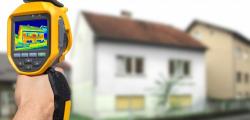H+H Why SAP assessors are key to Part L compliance
 In a new age of building regulations, your SAP assessor should be your new best friend.
In a new age of building regulations, your SAP assessor should be your new best friend.
The 2021 amendments to Part L have changed compliance procedures with one goal: to improve design vs as-built performance. To make your life easier and to ensure your build stands up to new regulations, engage with a Standard Assessment Procedure (SAP) assessor as early as possible in the construction process.
SAP calculations are a requirement for new build homes, conversions and extensions in the UK. It is the government’s method for calculating the energy performance of dwellings. Accredited assessors generate SAP calculations, minimum standards for which are set out in Part L of the building regulations.
Consulting an assessor at the design stage means they can advise you on exactly what you need to do to build to Part L. This is even more important as the new regulations introduced two evidence reports needed for compliance. A photo evidence report is required, as well as a BREL (Building Regulation England Part L) report which is the final document produced by your SAP assessor and submitted to Building Control.
It is the responsibility of the builder to provide photographic evidence to an SAP assessor. Photos need to be taken of each dwelling as it is constructed to demonstrate build quality. The images should show typical details that confirm thermal continuity; airtightness detailing; what key building services, plant and equipment have been installed, and pipe and ductwork installation.
Rigorous quality checks are more important than ever to ensure a building’s design is accurately reflected on site. Once your assessor has acquired the necessary photo evidence, they can make changes to the SAP calculation that will appear in the BREL report if the onsite reality has deviated from the design.
A significant enough discrepancy between the design and what has been built could lead to non-compliance. This is particularly important as higher fabric requirements have placed more emphasis on thermal bridges where remediation can be costly and finding an area to compensate after the fact may not be possible. Working with your SAP assessor to get it right from the start and checking the building quality of critical junctions and thermal bridges is essential.
Building with H+H aircrete makes more sense than ever as Celcon Blocks can significantly reduce the thermal bridge effect at junctions. We also provide junction details, available in CAD or PDF format, compatible calculated thermal bridging values and a site checklist useful for anyone building with our aircrete products. These resources can be downloaded from the H+H website for free and can be used to help gather the correct images for the photo evidence report.
All of this means that in the age of the new Part L, building with H+H aircrete blocks should make complying to the building regulations that little bit easier.